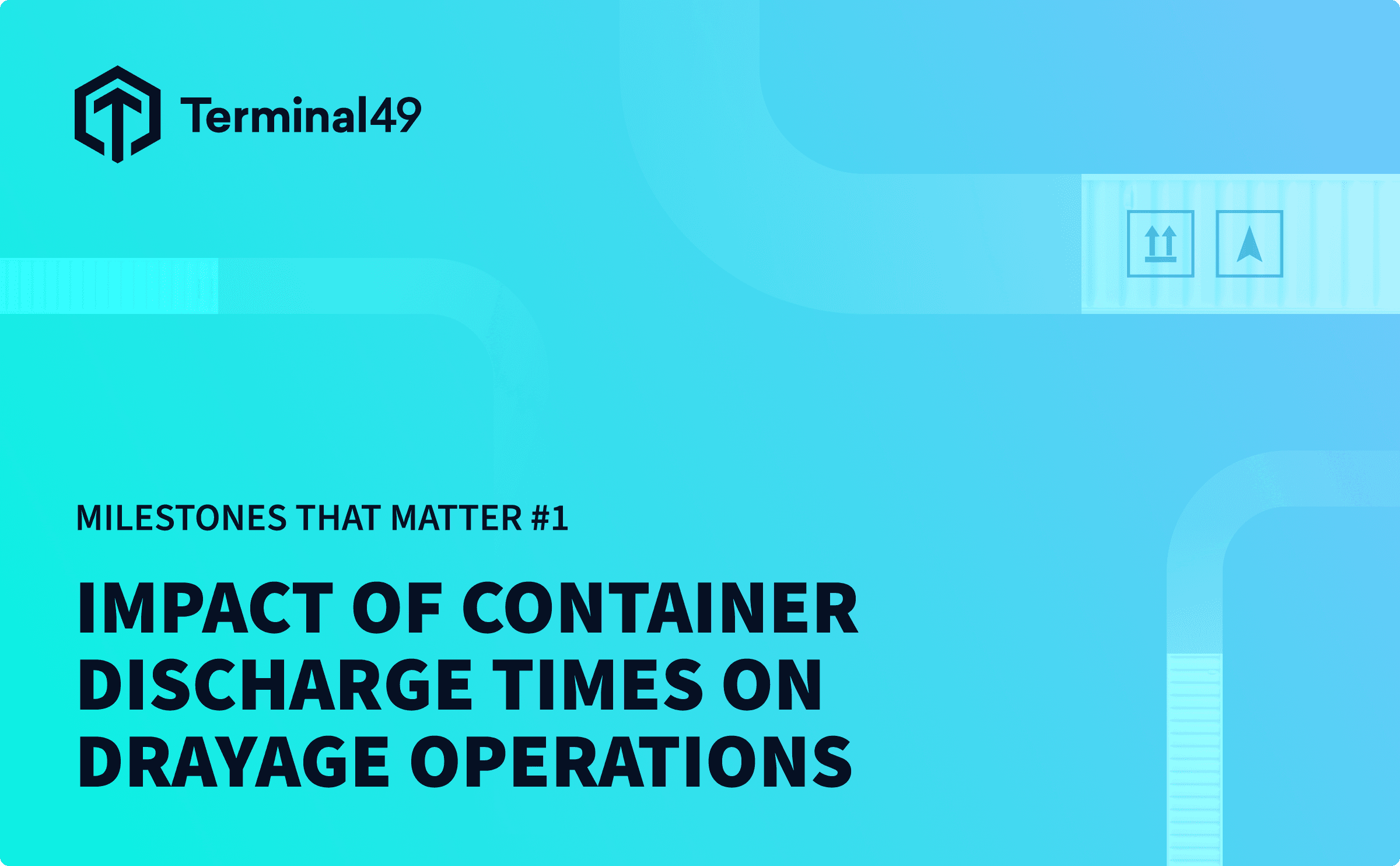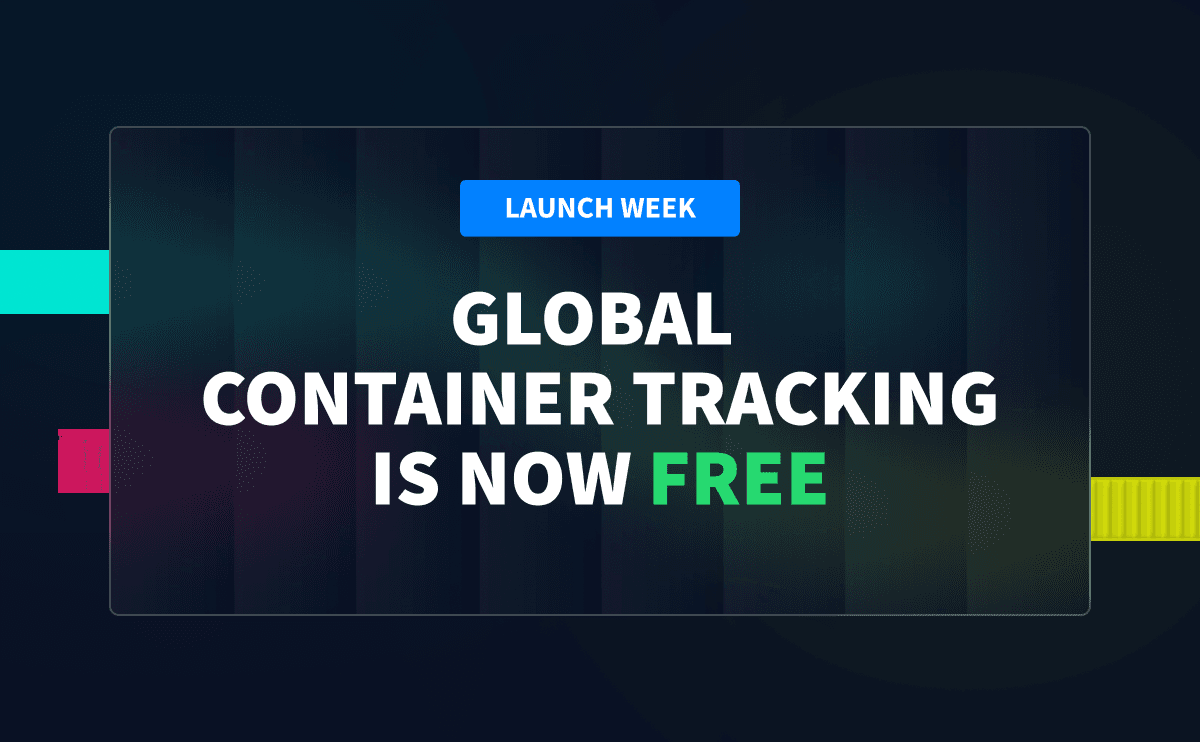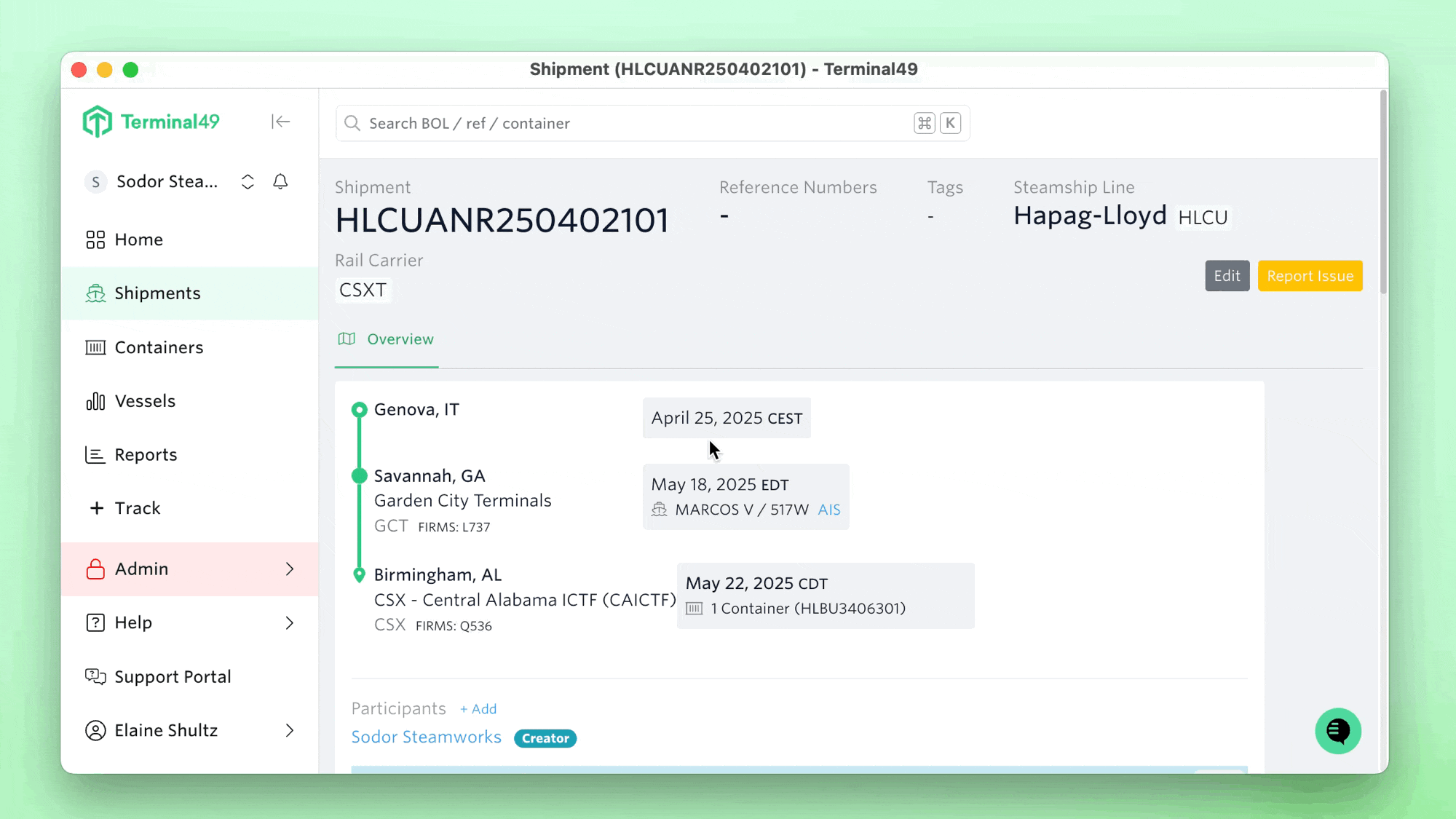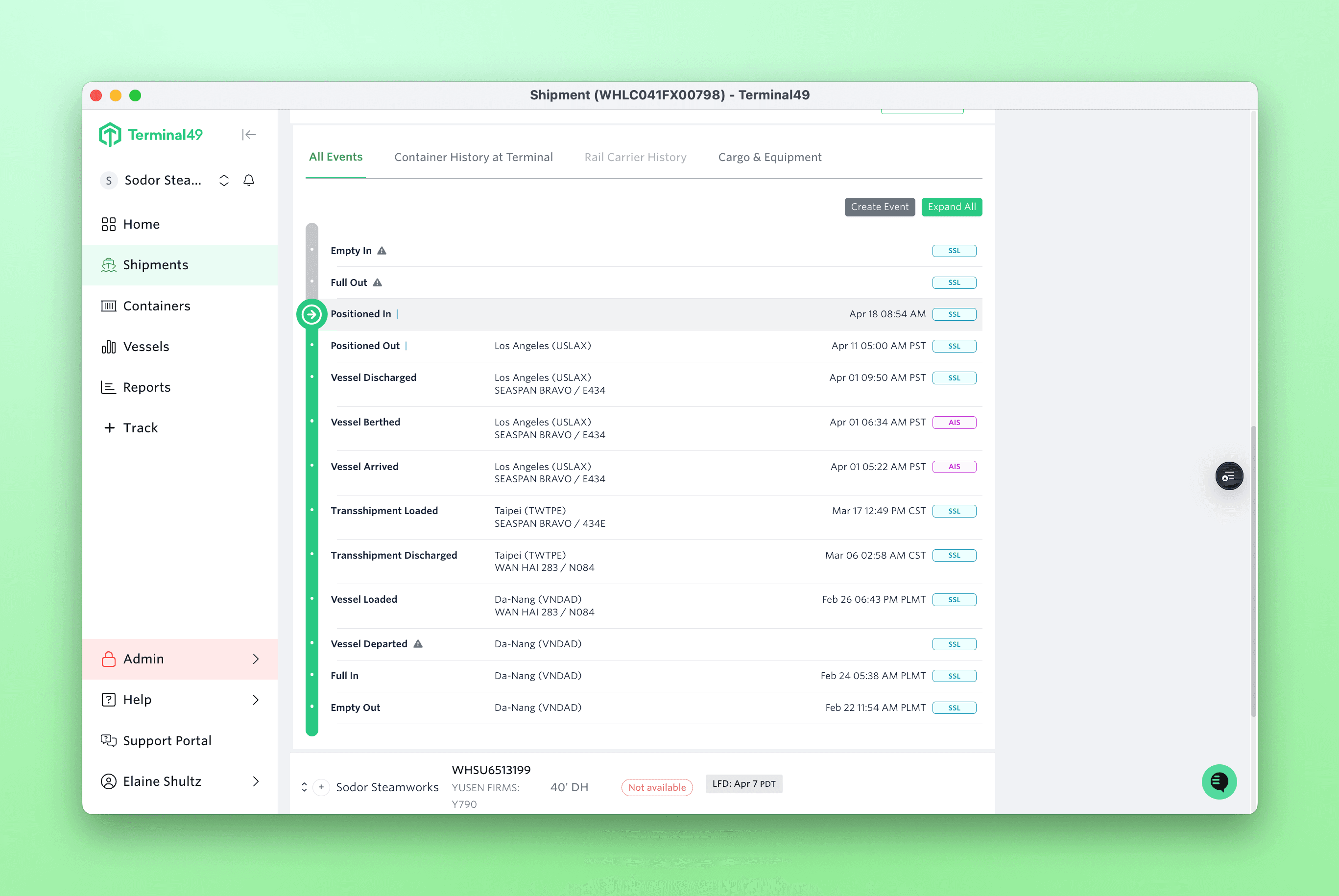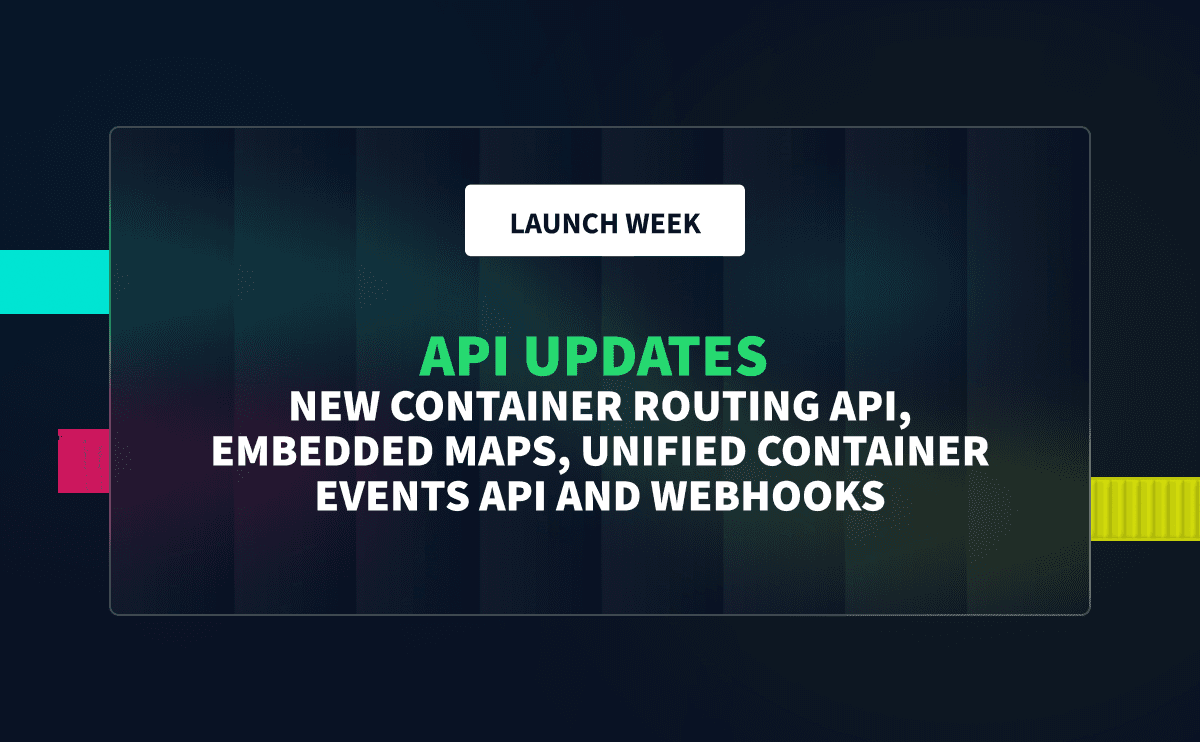Drayage operations are vital to international trade, acting as the crucial link between ports and destinations such as transloading facilities, warehouses, or distribution centers. However, without efficient management, these operations can become significant bottlenecks in the shipping process.
The complexities of drayage — such as limited equipment availability, chassis shortages, labor constraints, and ever-changing port regulations — make it highly susceptible to disruptions. In the ocean, disruptions to regular routes (such as the Red Sea crisis) have resulted in container ship and vessel schedule unpredictability, heavily impacting the efficiency of port drayage operations.
For many shippers and stakeholders, including freight forwarders and drayage carriers, this can mean dealing with missed deadlines, financial losses, and a scramble to manage trucks, warehouses, processes, and customers. This is why visibility and transparency via precision in container tracking is critical. Most notable is the accurate tracking of container data, such as discharge times and last free day (LFD), to prevent chaos. This is primarily because unreliable vessel schedules can complicate warehouse scheduling and truck assignments, leaving businesses vulnerable to inefficiencies and unexpected demurrage.
Accurate tracking of container discharge times and Last Free Day (LFD) is critical to optimizing drayage operations and reducing demurrage costs. This article explores how they can be leveraged to enhance end-to-end drayage operations.
Pain Points of Shippers and Operators in The Drayage Process
The drayage process has proved vital for shipping operations across the country. However, certain pain points make the entire process challenging for shippers and operators, such as drayage companies, freight forwarders, and 3PLs, leading to inefficiency and losses.
1. Disrupted Schedules
Vessel delays and changes in port processing times often disrupt trucking schedules for the drayage process. This means shippers and their partners struggle to allocate resources effectively, ultimately impacting both parties' processes. Without precise information, the entire process will struggle to fend off disruptions, leading to inefficiencies and unhappy customers.
2. Demurrage and Detention Costs
Demurrage and detention are key financial tools that shipping lines use to encourage the timely pickup and return of cargo containers. Considering that demurrage and detention fees typically range from $50 to $100 per day, these charges can quickly add up, accumulating into steep fees that blow up the shipping operation's budget. Missing the LFD because of lack of precision in the container tracking process can lead to delays in the container retrieval process, which results in these costs leading to financial strain.
3. Warehouse Coordination
When shipping timelines are uncertain, especially regarding container availability, disruptions in warehouse planning can occur. This can lead to inefficiencies, such as idle trucks or congested docks, delaying the flow of goods to the final destination. Ultimately, warehouse operators are unable to ensure a seamless flow of goods in and out of the warehouse because of a potential capacity crunch.
The Need for Real-Time Visibility in Drayage Operations
Traditional container status-tracking methods rely heavily on manual updates and fragmented systems. These outdated approaches often fail to provide real-time information, leaving businesses to rely on guesswork or frequent phone calls to terminals for updates.
In many cases, these shippers and their partners work blindly.
The problem with these traditional methods is the lack of visibility. For modern shipping operations riddled with all manner of complexities, this can lead to unnecessary challenges such as:
- Unpredictable pickup schedules.
- Missed opportunities to avoid demurrage fees.
- Inefficient use of trucking and warehouse resources.
The Solution? Real-Time Updates for Drayage Success
Real-time data throughout the shipping process provides a path forward for shippers, offering clear and timely updates about container discharge times, gate-in confirmations, and accurate LFD. Platforms like Terminal49 make this possible by automating container tracking and delivering accurate, actionable information that can be communicated effectively between all stakeholders in the shipping process.
When shippers and stakeholders have access to relevant and timely information, such as when containers will be ready for pickup and when the free time ends, they can operate confidently and more efficiently. This ensures:
- Timely retrieval of containers, minimizing the risk of fees.
- Better planning of routes and schedules to optimize resources.
- Streamlined coordination between warehouses, truckers, and freight forwarders.
To avoid the inefficiencies of outdated tracking methods, it’s crucial to assess visibility providers based on your specific criteria. This video outlines why not all providers are created equal and the must-have features to include in your evaluation checklist:
How Terminal49 Provides a Competitive Advantage
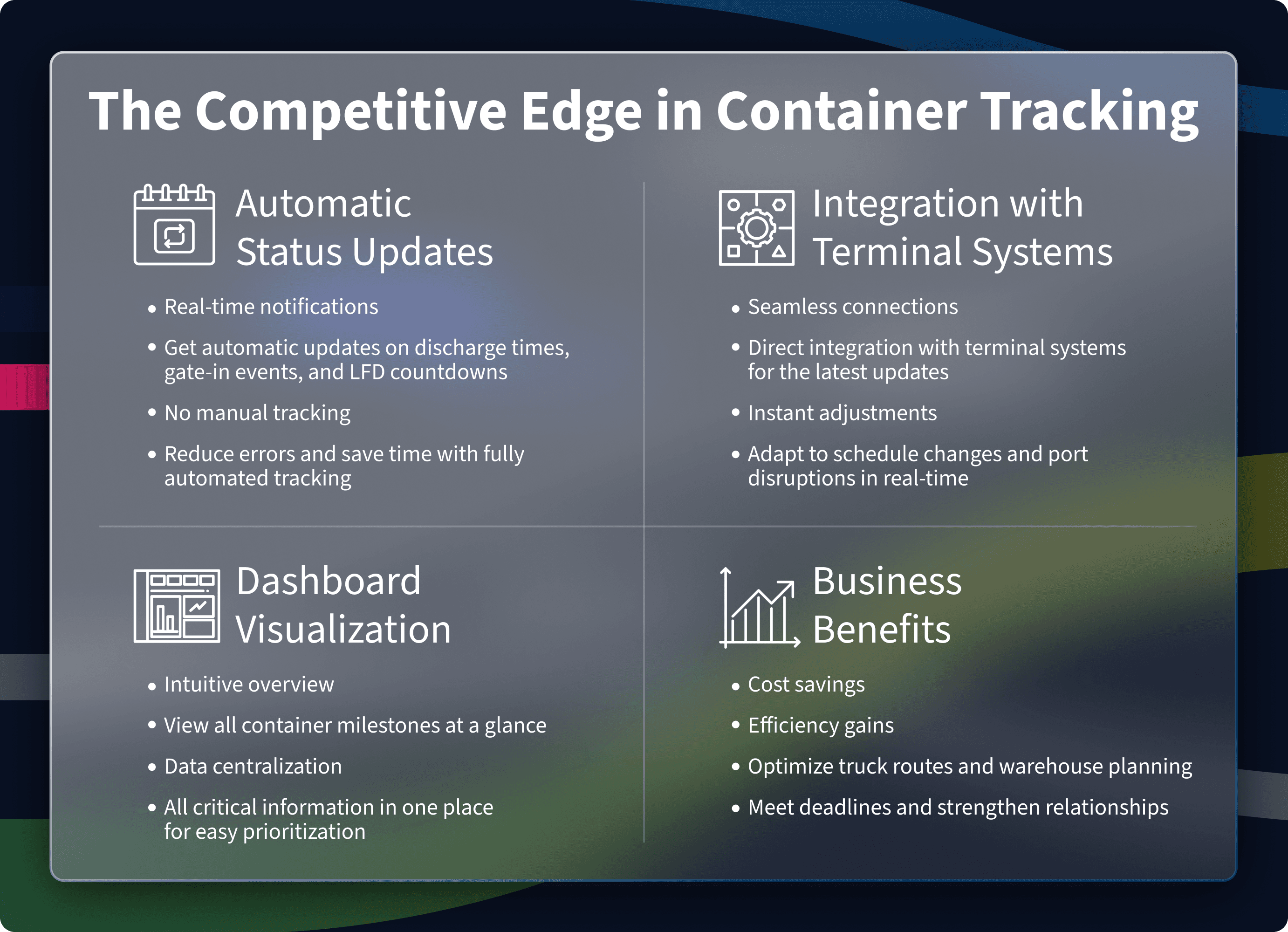
Terminal49 is a container tracking platform that allows shippers and various stakeholders in the shipping operation to transform their container management by automating status updates and centralizing critical information. Key features of the platform include:
1. Automatic Status Updates
Terminal49 eliminates manual tracking for shippers by ensuring they get real-time notifications for every container milestone. Shippers leveraging the platform can see discharge times, gate-in events, and the countdown to LFD on one intuitive dashboard.
2. Integration with Terminal Systems
The platform integrates directly with terminal systems, ensuring updates reflect any changes in vessel schedules or port operations. This real-time connection allows shippers and their partners to adjust plans quickly and much more efficiently when disruptions occur. This means no idle trucks or ineffective resource allocation.
3. Dashboard Visualization
Terminal49's comprehensive dashboard provides a clear overview of all containers actively being shipped. This makes monitoring progress and prioritizing actions easy. The platform helps users stay informed and focused on what matters by organizing data visually.
Examples/Use Cases of Terminal49 Container Tracking Solution
- Proactive Demurrage and Detention Management: Companies use Terminal49 to retrieve containers promptly, avoiding or eliminating unnecessary demurrage and detention fees.
- Enhanced Coordination: The platform facilitates smooth communication between freight forwarders, truckers, and warehouse teams by offering a unified view of container timelines.
- Operational Planning: By knowing when containers will be available, businesses can minimize idle truck time and optimize warehouse capacity. The platform also enhances the efficiency of intermodal transportation.
Leveraging Terminal49’s Tracking Prowess
Terminal49's container tracking solution has become an indispensable tool for businesses and operators navigating the complexities of global freight transportation and the intermodal shipping process. The platform helps them avoid high drayage costs or fees and improves efficiency across the supply chain. Terminal49's platform delivers the real-time updates and automated insights that professionals in logistics operations need to stay ahead, especially during the expedited drayage process.
If you are looking to streamline your pier drayage operations, intermodal drayage, and inter-carrier drayage, explore Terminal49's solutions to gain the clarity and control you need for success. Contact us for a free demo today.
